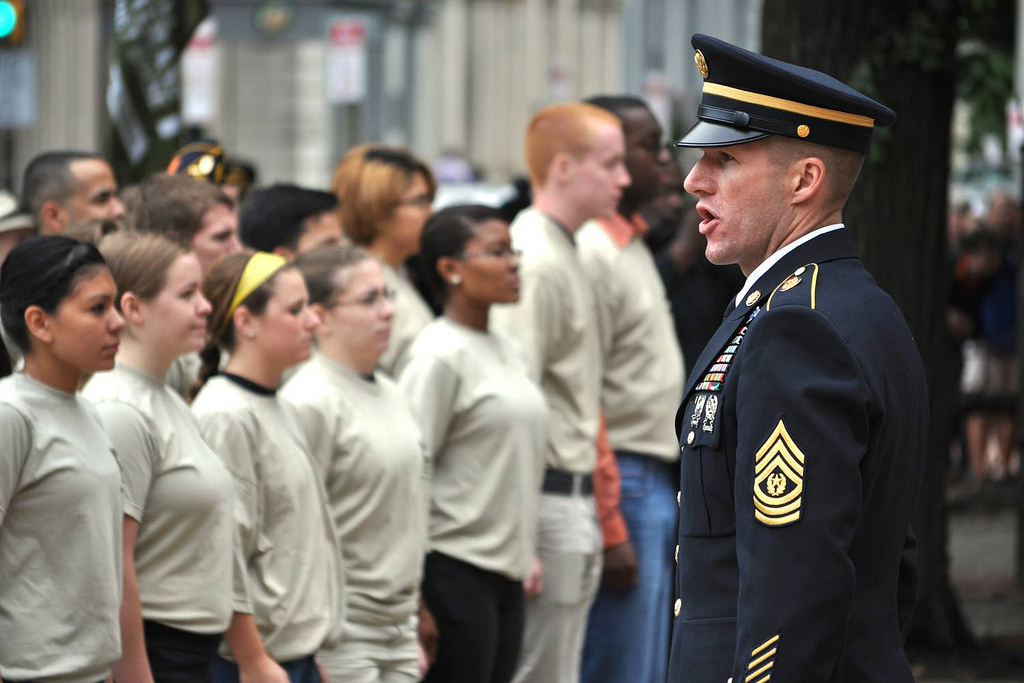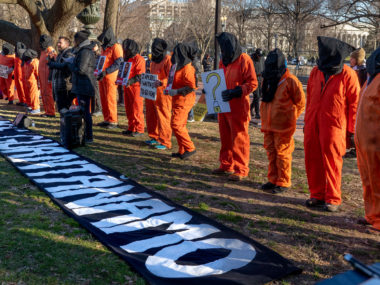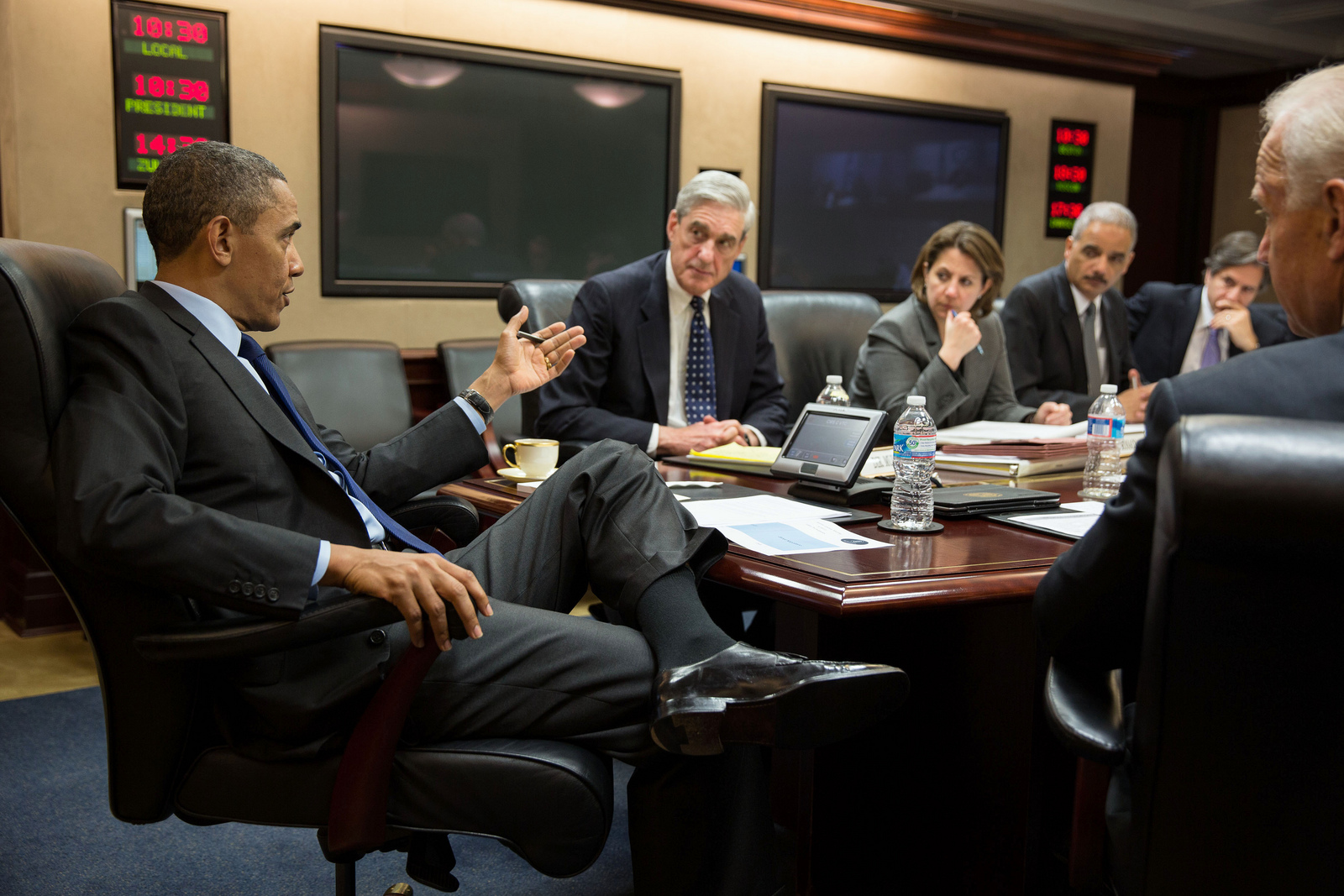By Cullen Hendrix.
A new study shows how trade-related job losses translate into increases in military enlistment. While the study is convincing in its own right, it raises important questions and highlights one potential pitfall of political-economic analysis: focusing on partial equilibrium results in a full-equilibrium world.
The United States-Mexico-Canada Agreement, or USMCA (or “NAFTA 1.1: Same Great Taste in a New Package!”), the trilateral trade, investment, and regulatory agreement that will replace the North American Free Trade Agreement (NAFTA) is still working its way through congressional approval in all three member nations. The political wrangling, which consumed most of 2018, was arduous and heated. Eventually, what emerged was a new trade deal that mostly kept NAFTA’s architecture in place and added to it many of the US-Canada-Mexico provisions included in the Trans-Pacific Partnership (TPP), to which all three countries were parties before President Trump withdrew the United States in January 2017.
As with most free trade discussions, the overwhelming focus has been on the economic implications. However, there are obviously security angles as well. Discussions of USMCA’s impact—and that of free trade agreements more generally—for US national security have thus far revolved far more around concerns about security cooperation, particularly at the US-Mexico border, global supply chains and their impacts for military technology and espionage, and of course the relative gains from trade that might, over time, tip the balance of power away from the United States.
To this list of effects, a new article by Adam Dean, assistant professor at George Washington University, adds another: by spurring military enlistment.
The argument is straightforward, and this 30-second clip from David O. Russell’s overlooked Gulf War dramedy Three Kings explains it better than I ever could. The key role here is Spike Jonze’s (of “Buddy Holly” and “Sabotage” fame for those of a certain age) out-of-work Army reservist, Conrad Vig:
Trade-related job losses lead to lack of opportunity in affected counties. Lack of opportunity leads to knocking on the recruiting office door—or answering when a squared-away recruiter knocks on yours. Using county-level data on trade-related job losses culled from petitions for assistance under the US Trade Adjustment Assistance program and military enlistments, Dean demonstrates that, “the 2.3 million trade-related job losses suffered across the United States from 1996 to 2010 are associated with roughly six thousand additional Americans enlisting in the US Army.”
The finding has intuitive appeal, and certainly demonstrates one heretofore overlooked way labor markets adjust to free trade. Moreover, it suggests trade, economic growth, and security are linked in ways both obvious and not. As one anonymous colleague jokingly quipped, “ispo facto if it hadn’t been for the China shock, there wouldn’t have been enough troops to invade Iraq,” adding, “Deng Xiaoping: the foundation of America’s 21st century military might.” (The “China shock” refers to the unprecedented—in both scope and size—manufacturing-driven rise of the Chinese economy, which displaced as many as 2.0 million to 2.4 million US jobs as a result of imports from China.)
While I don’t doubt the finding at all, I do think the study may paint an incomplete picture of the ways free trade might impact military recruitment. The reasons are two. First, this study looks exclusively at trade-related job losses. Specifically, it looks at job losses where a strong claim could be made the job was lost specifically to the offshoring or shuttering of a facility due to trade competition—so the diner cooks and wait staff who used to serve these workers on their lunch breaks but who lost their customer base aren’t counted. Thus, it likely undercounts the true magnitude of trade-related job losses by not looking at these second-order effects.
Second, and relatedly, the study does not account for any potential offsetting effects in other sectors of the US economy. Trade liberalization creates winners and losers, and often the winners and losers live in different places. US-China trade has been near catastrophic for some counties in North Carolina but a boon to the economies of high-tech centers like San Francisco and Seattle (including Everett, Washington, where many of the Boeing planes for which China has a voracious appetite are made). If the core logic of the argument revolves around labor markets and opportunity costs, it’s reasonable to assume that trade liberalization may have made recruiting in Catawba County, North Carolina, much easier but recruiting in suburban Seattle that much harder. This, among other reasons, is part of the explanation for why the US military is so heavily Southern, even if it is relatively ethnically diverse: many Southern states were hit especially hard by the decline of the textiles and light manufacturing industries.
These two issues highlight the potential pitfalls of relying on partial equilibrium results to inform thinking about full equilibrium systems. In economics, partial equilibrium refers to the dynamics of one specific sector or part of the economy. In this case, the relationship between trade-related job losses in certain counties and military enlistment in those counties. Full equilibrium, however, refers to analysis that takes into account second-order effects, adjustment, and dynamic and often difficult-to-assess linkages across the whole economy. It goes without saying that, in the real world, full equilibrium analysis is desirable—even if it’s almost impossible to do.
Viewed narrowly, this article provides strong evidence that trade liberalization was a boon to military recruitment. This evidence is compelling—but it’s only part of the picture. To assess the full effects of trade liberalization on military recruitment, we’d need not just to account for the TAA-related job losses but the second-order job losses that came with them; moreover, we’d need to know something about the jobs that were gained in other counties, and how those booming job markets complicated the task of recruitment there. We’d want to be able to separate the effects of trade-related job losses from those lost to automation—a task that’s pretty complicated in its own right. In short, this article is an excellent first step in assessing the way global economic integration is affecting the US military’s ability to field a fighting force—but many steps lay ahead.





